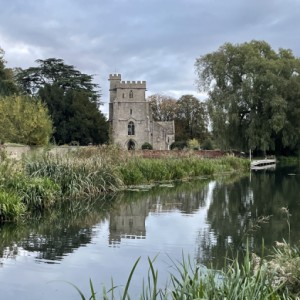S.S. Great Britain
Tuesday
This morning, and into the afternoon, we visited the S.S. Great Britain, one of Brunel’s masterpieces, and built in 1843 in Bristol, under his supervision for the Great Western Steamship Company. Originally conceived as a paddle steamer, her design was quickly altered to take advantage of the new technology of screw propulsion, and her engines were converted to power a huge sixteen foot iron propeller. When launched in 1843 she was by far the largest ship in the world, and was the first screw propelled, ocean-going, wrought iron ship.
Weighing in at 1930 tons, she was designed initially for the Trans-Atlantic luxury passenger trade, and could carry 252 first and second class passengers and a crew of 130. However, her first few voyages, whilst being a technological success, were not a great financial success, attracting far fewer passengers than anticipated. Her career in this trade was thus short lived, and after she ran aground on the sands of Dundrum Bay in Northern Ireland in 1846, her engines were so badly damaged that she was sold on.
Under her new owners, the ship prospered. The new owners took advantage of the increase in emigration caused by the Australian gold rush, and re-built the ship as an emigrant carrier, taking people to Australia. With a new upper deck added and a new engine fitted, she could now transport 750 passengers in three classes. Over the next 24 years and 32 voyages she carried over 16,000 emigrants to Australia, and was known in her time as one of the fastest, most elegant and luxurious emigrant clipper ships.
By the late 1870’s the Great Britain was showing her age, her engines were removed, and she was converted into a fast three-masted sailing ship. In this version, the once proud ship transported Welsh coal to San Francisco. On her third trip, however, she ran into trouble around Cape Horn, and was forced to run for shelter in Port Stanley in the Falkland Islands. Damaged as a result of this, she was sold as a coal and wool storage hulk in Port Stanley, and remained in the Falklands, rusting away for 70 years. Attempts to rescue her in the late 1930’s and 1960’s failed, but finally in 1970 an epic salvage effort refloated the ship, and she was towed back home across the Atlantic to Bristol.
Having completed the fascinating tour of the ship and the Brunel museum, we continued on our way. We were spending the night in a lovely country hotel west of Stroud. At the bottom of the hotel gardens, there was a small canal, so after a cup of tea, and before dinner, we went for a walk along the canal - see extra.
Step count: 10,808


Comments
Sign in or get an account to comment.


